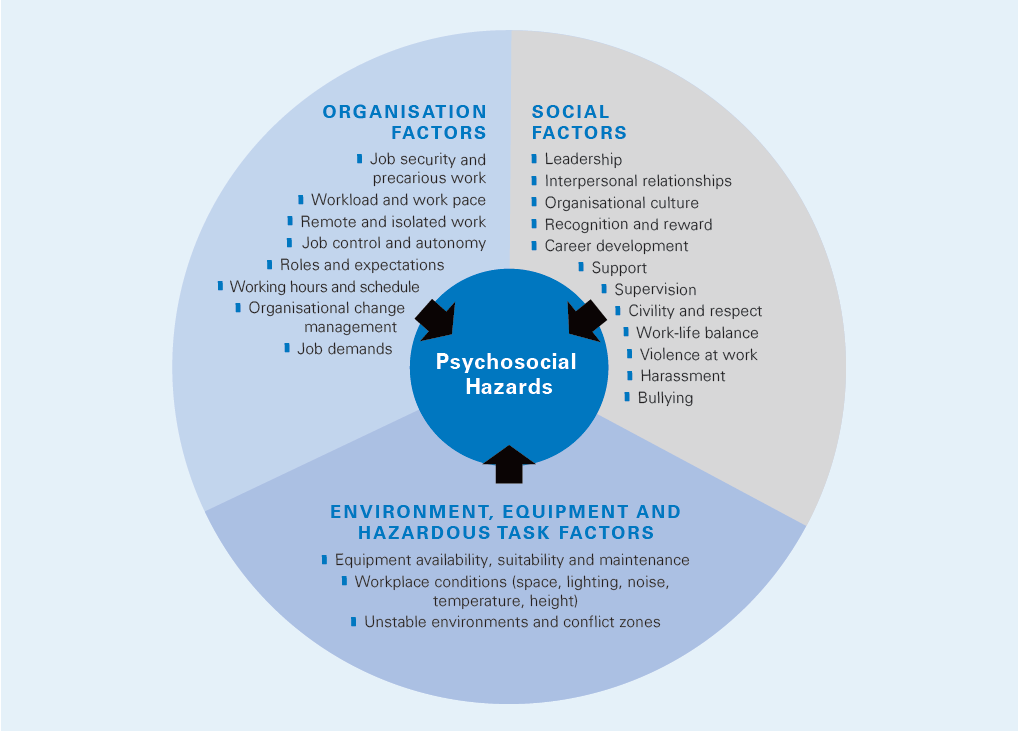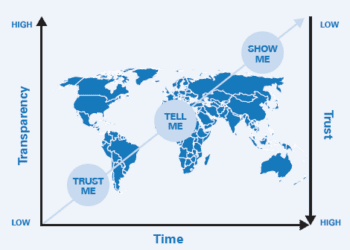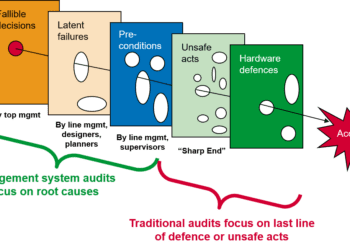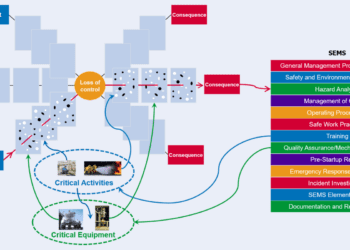Managing Psychosocial Risk: Is ISO 45003 the answer?
In the UK, 55% of all ill-health working days lost in 2019/2020 were due to work-related stress, anxiety or depression, so why aren’t we doing more about it? ISO 45003 Psychological Health and Safety at Work: Managing Psychosocial Risks is the first global standard which gives practical guidance on managing psychological health in the workplace. Can this help?

© Shutterstock
THE CONTEXT
2019/2020 saw 111 workers killed at work in the UK. While each fatality is undoubtedly a tragedy, this is the lowest number of annual fatalities at work ever recorded in the UK, a decrease of 38 from 2018/2019 (Ref. 1). The UK Health and Safety Executive (HSE) also reported that in the same period there were 828,000 workers suffering from work-related stress, anxiety or depression, accounting for 51% of all work-related ill-health (Ref. 2). This amounted to almost 18 million lost working days, which was 55% of all working days lost due to ill health. Furthermore, there are at least 600 suicides each year which have work-related causes (Ref. 3). Top factors include job insecurity, overwork, stress, poor management and unfairness at work (Ref. 4).
Whilst increased working from home as a result of the global pandemic has potentially helped to reduce the number of fatalities at work, the effect on psychological health is yet to be fully understood.
If psychological health in the workplace is important and the management of psychosocial risk is necessary, then why isn’t more being done about it? In (rightly) continuing to push for net-zero fatalities from accidents at work, has work-related psychological ill-health been outsourced to the home? Of course, the picture is more complicated than that.
Firstly, the causes of suicides are complex and it is often difficult to establish a direct link with the workplace (Ref. 2). Work-related factors that contribute to or detract from psychological health are subjective; they affect different people in different ways. Secondly, good practice for psychosocial risk management has yet to be established.
The fact that suicides are explicitly excluded from formal reporting to the UK regulator does not remove or mitigate the employer’s duty of care. Employers have a duty to reduce risk to employees and those who may be harmed, so far as is reasonably practicable. This is as true for psychological health as it is for physical health and safety. There is a duty to carry out a suitable and sufficient assessment of risks arising from work activities. This includes the risk of impairment of psychological health. But how can we do it?
OVERVIEW OF ISO 45003
Expected to be published in the summer of 2021, ISO 45003 Psychological Health and Safety at Work: Managing Psychosocial Risks (Ref. 5) will be the first global standard to provide practical guidance on managing psychological health in the workplace through an Occupational Health and Safety Management System (OHS-MS). The new standard describes potential psychological hazards that can affect workers, including those associated with home working, and provides guidance on methods of identification.

Figure 1 – Psychosocial Hazards based on ISO 45003 (REF. 5)
The negative effects of poor psychological health for workers (including anxiety, depression and sleep disorders) and poor health behaviours such as substance misuse are well acknowledged. However, as well as providing a framework and guidance for management of psychological health risk, ISO 45003 also addresses the associated opportunities.
Effective management of psychological health and safety can help to improve organisational sustainability, enhance productivity and worker engagement, improve employee retention and increase innovation. Focus on psychological health and wellbeing may have wider ramifications, such as improvements to safety culture and reduction in human error rates; and provides another perspective from which to approach the drive towards zero fatalities in the workplace.
RELATIONSHIP TO ISO 45001
45003 is intended to be used in conjunction with ISO 45001 Occupational Health and Safety Management Systems (Ref. 6). ISO 45001 contains requirements as well as guidance for planning, implementing, reviewing, evaluating and improving an OHS-MS. The two standards push towards the development of good practice for integrating psychosocial risk management into mainstream health and safety risk management.
FROM GUIDANCE TO PRACTICE
ISO 45003 includes a checklist of psychosocial hazards, as shown in Figure 1, and associated causal factors. However, it does not provide guidance regarding the relative significance of each of the hazards or causal factors. This is likely to be organisation- and individual-specific, and perhaps not something the standard could be expected to do. Further, from the examples provided, it does not fully address the question of how to evaluate risk and determine the most effective control measures.
The standard lists potential methods for identifying hazards but the selection of the most appropriate method is, of course, down to the organisation and the practitioner. The method of hazard identification and gathering information is an important question, particularly given the often sensitive nature of the subject and the information being gathered.
This notwithstanding, ISO 45003 provides comprehensive guidance, with practical tools, for example, regarding the signs of exposure to psychosocial risk. The standard should certainly be welcomed readily, but it will be up to industry and individual organisations to apply and develop the tools to implement it effectively, and ultimately determine if this is the springboard to improved psychological health and wellbeing at work.
CONCLUSION
There is a clear need for effective psychosocial risk management in the workplace. ISO 45003 provides a strong foundation, although there is work to be done to turn the framework and guidance into good practice for psychosocial risk management.
References
- https://www.hse.gov.uk/statistics/history/historical-picture.pdf
- Health and Safety Executive, Health and Safety at Work Summary Statistics for GB 2020 https://www.hse.gov.uk/statistics/overall/hssh1920.pdf
- https://www.cieh.org/ehn/health-and-safety/2019/october/work-related-suicides-excluded-from-hse-death-statistics/#:~:text=Suicides%20related%20to%20work%20are,due%20to%20pressures%20at%20work
- https://www.hazards.org/suicide/suicidalwork.htm#refs
- ISO/DIS 45003:2020(E) Occupational Health and Safety Management — Psychological Health and Safety at Work: Managing Psychosocial Risks — Guidelines
- BS ISO 45001:2018, Occupational Health and Safety Management Systems – Requirements with Guidance for Use








